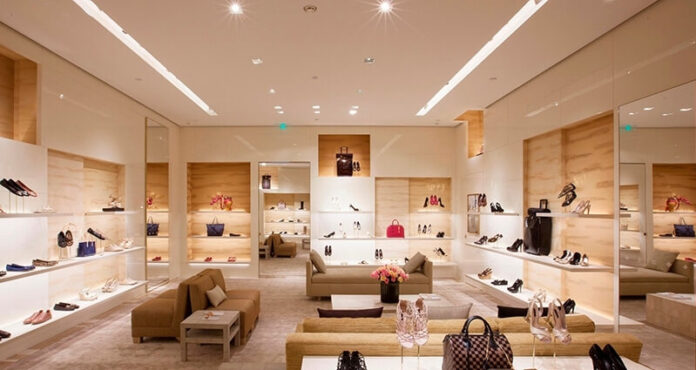
Lighting is one of the important components of commercial store space. Effective lighting design can attract and guide consumers’ attention, creating a comfortable, safe and harmonious light environment atmosphere. Taking commercial stores as an example (such as clothing stores, bookstores, restaurants, etc.), we have summarized the following points with its years of commercial lighting design experience:
1. Consider the requirements
Consider the requirements of the commercial atmosphere and contrast the environment to determine the combination of light sources and light colors in each area. Light color often plays a decisive role in creating the atmosphere of a commercial environment, and light color depends on color temperature. Generally, a warm color light source can create a stable and gentle feeling. As the color temperature increases, the light source gradually appears white and blue, giving people a bright and cool feeling. Therefore, in accordance with the requirements of specific business characteristics and overall environmental effects, full attention should be paid to the selection of illuminance and color temperature in the design.
2. Deep into commercial showcases and shelves
The key lighting goes deep into commercial showcases, shelves, commodities, entrances and exits. The environment of the window should be rich and changeable, and it varies with the types of goods, brands, display methods and space composition. In order to highlight some items in the window, accent lighting or decorative lighting can be configured to obtain a special sense of light and texture to achieve color performance. Special attention should be paid to the light distribution and lighting in the window to choose lamps that can freely change the lighting defense line to meet the constantly changing needs of the products displayed in the window.
The combination of light sources should be designed according to the space composition, and the lamps with different illumination directions, such as top light, backlight, face light, foot light, etc., should be used to make the overall performance rich in layers and leave a beautiful and lasting impression.

An important aspect of accent lighting is the lighting of the entrance of the store, including the entrance design of the store, store logo, etc., which is an important part of attracting customers. The lighting design must show the artistic quality of commercial buildings and reflect the nature and characteristics of commercial buildings. It is often appropriate to increase the illuminance and pay attention to the concealment of the light source, and increase the organic combination of dynamic lighting sources with store logos, rollovers, patterns, etc. Play a finishing touch, and then achieve commercial goals.
3. Display rack lighting
The display rack lighting is one of the most used commercial lighting. There are generally two types of display racks, one is the closed type, which is purely for display. The other is an open type, which is used for display in self-selected shopping malls. The vertical illuminance of its lighting design is 1.5-5 times that of the general lighting of the entire commercial environment. Only when the illumination meets certain requirements can a special Commercial effect.
In the configuration of the light source, it is strictly forbidden to direct the light source to the height of the customer’s eyes, resulting in harsh glare. In addition, in order to adapt to changes in merchandise display and space layout, auxiliary facilities such as lighting tube racks can generally be installed to change the display. In addition to meeting certain requirements for illumination, what kind of color the product can have under a specific light source is an important issue in the performance of product color characteristics. Generally, it is faithful to the color of the product and expresses naturally and truthfully. A light source with a higher color rendering index can be used in the design. When the color rendering index of the light source is closer to 100, the color display of the product is more realistic.

4. Performance of product quality
The performance of product quality often arouses the curiosity of customers, requiring the material and surface treatment characteristics of the product to be closely combined with the characteristics of the light source and light quality in the lighting design. The directional illuminating lamp makes its light project in one direction, and it falls on the surface of the object to increase the brightness contrast between the light and the dark surface, which can well express the gloss of the light-receiving surface of the object.
5. Choose the right lamps
Appropriate light shading angle, beam angle and light distribution curve are also very important. The shading angle of the lamp also plays an important role in limiting and eliminating glare. The larger the shading angle, the less glare. But if the shading angle is too large, the efficiency of the lamp will become very low. Therefore, we generally recommend that the shading angle of the lamp should be between 15-30 degrees.
